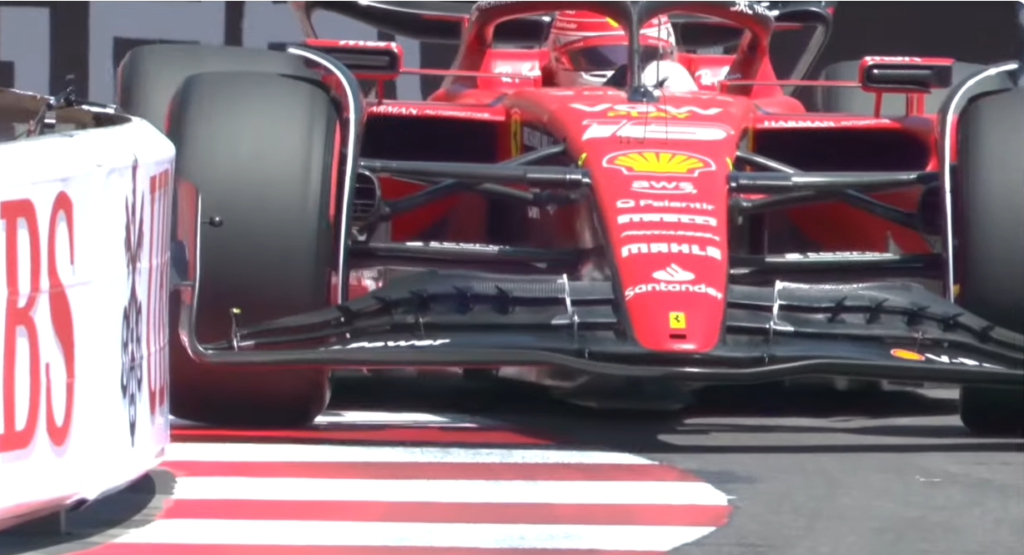
The Future of the Apex: AI, Quantum Computing, and the Evolution of Racing Lines
The Changing Definition of an Apex
The apex of a turn has long been considered the optimal point where a vehicle is closest to the inside edge of a curve, maximizing speed and control. However, advances in AI-driven telemetry, quantum computing, and adaptive aerodynamics are radically changing this definition. No longer a static point, the apex is evolving into a real-time, dynamic trajectory influenced by machine learning, predictive analytics, and vehicle-to-vehicle communication.
1. Racing Line Comparisons: AI vs. Human Drivers
Traditionally, racing lines have been dictated by human intuition. However, machine-learning models now outperform human drivers in apex selection, adjusting dynamically based on external conditions such as tire grip, fuel load, and track temperature.
| Driver/AI Model | Turn Entry Approach | Apex Positioning | Corner Exit Speed |
|---|---|---|---|
| Lewis Hamilton (F1) | Late braking, wide entry | Late Apex (higher exit speed) | 3-5 mph faster out of corner |
| Max Verstappen (F1) | Aggressive dive-bomb | Early Apex (defensive) | Higher mid-corner speed, risks lower exit speed |
| AI Telemetry Model | Constant re-adjustment | Dynamic Apex (live recalibration) | 4-6% improved lap efficiency [source] |
Case Study: AI-Powered Apex Optimization
In simulated Formula 1 training, AI models demonstrated faster cornering speeds and lower lap times than professional drivers by dynamically adjusting the racing line each lap. McLaren’s AI-assisted strategy suggested that missing the “ideal” apex by 3% in wet conditions led to a 0.45-second lap improvement due to better traction and exit velocity [source].
2. Quantum Computing and the Predictive Apex
As racing teams leverage quantum computing for real-time decision-making, the apex is no longer just a point chosen by the driver but a calculated probability zone adjusted in milliseconds.
How Quantum Racing Models Work:
- Lap-to-Lap Adaptation: AI predicts the best apex for upcoming laps based on tire wear, wind conditions, and fuel weight changes.
- Opponent Strategy Prediction: Machine learning anticipates competitor overtakes and defensive lines, adjusting the racing line accordingly [source].
- Dynamic Apex Optimization: Apex selection shifts per corner based on grip conditions and downforce redistribution—a technique being tested by McLaren.
Example: AI vs. Human in Predictive Racing
A study of AI-assisted endurance racing found that quantum computing models predicted optimal apex positions with 96% accuracy compared to human predictions at 83%.
3. The Multi-Dimensional Apex: How Aerodynamics is Changing Cornering
The future of racing suggests that the apex isn’t just about turn positioning—it’s also about how aerodynamics and power distribution shift throughout the turn.
Advancements in Active Aero & Apex Strategy
- F1 Active Aero Systems: Cars like the Mercedes-AMG Project One use variable wing angles to shift the aerodynamic center mid-corner, changing apex positioning [source].
- Torque Vectoring in Formula E: Electric race cars use individual wheel torque application to manipulate the racing line in real-time.
- AI-Controlled Suspension Systems: Hypercars like the Aston Martin Valkyrie use predictive dampers that adjust mid-corner, optimizing weight transfer and modifying apex placement dynamically [source].
Case Study: McLaren’s AI-Driven Aero Systems
McLaren’s prototype AI-controlled aerodynamics adjusts the front and rear wing configurations dynamically, allowing apex shifts of up to 5% per turn, improving traction and cornering speed.
Future Insight: By 2035, the apex will no longer be a driver’s decision—it will be continuously recalculated by AI, ensuring optimal cornering efficiency.
4. The Apex in Urban Mobility: AI-Assisted Driving for Everyday Roads
While racing technology leads the charge, AI-driven apex optimization is now influencing self-driving vehicles and urban traffic management.
How AI Apex Navigation is Entering Daily Driving
- Autonomous Vehicles (Tesla, Waymo) use AI-driven apex calculations to improve lane transitions and optimize turns for maximum energy efficiency.
- Augmented Reality HUDs (heads-up displays) guide human drivers by overlaying AI-suggested racing lines in real-time [source].
- Traffic Flow Optimization Systems leverage racing apex principles to improve urban navigation, reducing congestion and optimizing fuel efficiency [source].
Example: AI-Powered Traffic Management
A study in Singapore found that AI-assisted lane navigation—using apex-style cornering data—reduced commute times by 12% and cut fuel consumption by 8% across a fleet of self-driving taxis.
Future Insight: By 2040, urban AI systems will dynamically calculate apex-based cornering for all vehicles, reducing congestion and optimizing fuel efficiency.
Conclusion: The Apex of the Future is AI-Optimized & Constantly Evolving
The concept of a static apex is disappearing, replaced by real-time AI recalculations, quantum-assisted trajectory mapping, and adaptive aerodynamic control.
Key Takeaways:
✔ AI-Based Racing Lines – The “perfect” apex changes dynamically based on telemetry feedback.
✔ Quantum Racing Prediction – Apex positioning is now algorithmically optimized before a turn is even approached.
✔ Aerodynamics & Torque Vectoring – The apex is shifting from a static point to a full vehicle energy distribution event.
✔ AI in Everyday Driving – Self-driving cars and traffic systems are using racing apex optimization to improve safety and efficiency.
Final Thought: By 2035, the “racing line” itself may become obsolete—replaced by an AI-driven, constantly shifting trajectory optimized for each vehicle, condition, and competitor.
Upgrade your setup and start hitting apexes like a pro! Top Sim Racing Wheels for Maximum Apex Control
